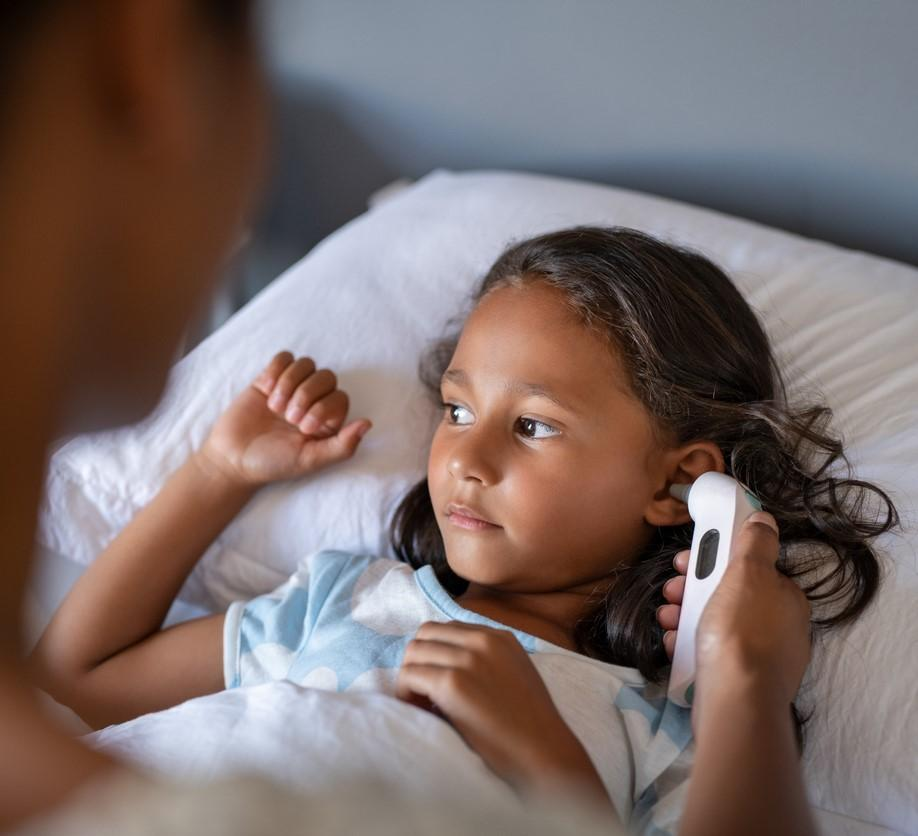In the first two waves of the COVID-19 pandemic, 16% of children aged 5 to 12 years didn't visit their healthcare provider, 11% went without a well-child visit, and 30% didn't complete a well-child visit in the past year, parent responses to a US Centers for Disease Control and Prevention (CDC) survey show.
CDC researchers and other public health experts analyzed survey data from pandemic wave 1 (October and November 2020) and wave 2 (March to May 2021) from the COVID Experiences Survey, a national online or phone survey of parents of children 5 to 12 years old (1,561 in the first wave, 1,287 in the second). The respondent retention rate over time was 82%.
The team assessed three areas of unmet pediatric medical needs: forgone care and well-child visits in fall 2020 to spring 2021 and no well-child visit in the previous year as of spring 2021.
The study authors noted that the pandemic disrupted healthcare via temporary closures of medical offices, canceled appointments or transitions to telehealth, and changes in patients' comfort with seeking healthcare. "This disruption layered on existing barriers to health care, such as lack of insurance and prior experiences with health care discrimination, and might have exacerbated previously identified disparities in access to health care and receipt of recommended services," they wrote.
Non-White kids at highest risk for missed care
In total, 16.3% of children had forgone care, 10.9% had skipped well-child visits, and 30.1% had no well-child visit in the prior year. The most reported types of missed care were well-child visits (10.4%) and vaccinations (3.2%), and the most common reasons for forgone care were fear of contracting COVID-19 (38.0%) and difficulty securing an appointment (18.6%).
White children were at much lower risk of experiencing any of the three outcomes, being less than half as likely to go without a well-child or vaccination-related visit than their non-White peers.
Parents who reported experiencing no racism had a model-adjusted prevalence of 11.8% of their child missing care, while children of parents who reported experiencing racism at most often across situations had a model-adjusted prevalence of 70.3% of forgone care.
Children who had an emotional, mental, developmental, or behavioral condition were 2.1 times more likely to forego care but 40% less likely to have had no well-child visit than their counterparts without such conditions.
Those who experienced racism were at a 2.7 and 2.1 times higher risk of skipping care and a well-child visit, respectively, than those who didn't experience racism. Children attending school through an in-person or hybrid format were 30% less likely to have forgone care than peers attending school fully remotely.
"Depending on whether a school was open for in-person instruction, there may have been differences in the need for physicals for students to play on sports teams and actions that schools took to facilitate access to care (eg, providing referrals)," the authors wrote. "Additionally, children who are attending school virtually might also have resided in communities where COVID-19–related cancellations of medical appointments and concerns about attending medical facilities were more common."
Rural living, low incomes as risk factors
Parents who had trouble securing childcare were often or sometimes at double the risk of reporting forgone care and well-child visits but 30% less likely to report no well-child or vaccine-related visits. Households with incomes of $30,000 to $100,000 were 1.4 times more likely to report their child had no well-child visit than those earning more than $100,000.
Our findings underscore the magnitude of children’s unmet health care needs during the COVID-19 pandemic.
Children living in rural counties were 1.7 times more likely to have had no well-child visit but 40% less likely to have gone without well-child visits than their peers in suburban counties, and those living in counties with lower-occupancy hospitals were at 1.4 times the risk of having no-well child visit than those in areas with higher-occupancy hospitals. Those living in counties with fewer primary care physicians had lower odds of not having a well-child visit.
"Taken together, our findings underscore the magnitude of children’s unmet health care needs during the COVID-19 pandemic and, considering continued disparities, the need for multilevel interventions across clinical and community settings to improve access to and delivery of pediatric health services during future public health emergencies," the researchers concluded.




















